
I enjoy so many blessings living in my small rural village in northwest Ireland. The people are wonderful: kind and helpful and piety remains strong here.
One thing that saddens me, however, is the state of the sanctuary in our little chapel.
Somewhere around the late sixties, a plain modern altar was placed in the centre of the sanctuary, as was the norm, with the post-Vatican II liturgical changes.
However, our village escaped the terrible changes happening in many places elsewhere: The old, marble high altar with beautiful reredos remained intact.
Tragically, it was not to last. In 1991, the parish priest decided to ‘renovate’ the chapel. The magnificent high altar, was smashed to pieces and buried in the cemetery. Similarly, side altars to the Sacred Heart of Jesus and our Blessed Lady were also destroyed and the statues removed.
The modern tabernacle, which resembles a tin can, was then installed on a pillar, barely visible above the new altar. A long radiator is now visible behind it.
Whilst our Lord, present in the tabernacle, remains in central position, all these rearrangements only serve to diminish him.
For the old arrangements rendered Him glory, whilst the new are humdrum and pedestrian by comparison.
All this struck me forcefully, whilst I was reading a little booklet by Michael Davies, The Catholic Sanctuary and the Second Vatican Council. Therein is featured a photograph of the sanctuary at London’s Brompton Oratory. The oratory is complete: there is no destruction. There is only beauty.
Beneath it, a caption reads:
The beautiful sanctuary of the Church of the Oratory, London, after all the mandatory post-Vatican II changes have been made – that is, no changes have been made to the pre-conciliar sanctuary.
What happened? – I ask myself. Why were thousands upon thousands of beautiful sanctuaries destroyed, if this was not mandated by the Vatican Council?
Moreover, what happens to a Catholic people, when such radical changes are made – changes affecting our greatest act of worship, Holy Mass, which lies at the very heart of the faith?
So, what are these changes and …
What happens when the altar is separated from the Tabernacle?
What happens when a priest stands between them?
What happens when we gaze into the face of a man, rather than into the face of God?
What happens when we no longer look upon beautiful vestments, but to a modern block-like altar that chops our vision of the priest in half?
What happens when the priest faces West, representing the world, rather than East, the Resurrected Christ?
What happens when the priest’s prayers are directed towards the people and not towards God in His tabernacle?
What happens when everyday conversation is interjected into the liturgy?
What happens when statues are removed from churches and side altars are eliminated?
What happens? These are questions I ponder daily – questions that have been in my prayers and thoughts for years now, in fact since I first discovered the Traditional Latin Mass, which penetrated me deeply.
For at that Mass, the Sacrifice at the altar made sense to me in a way it never had before. What hit me particularly was the ad orientam direction in which the Latin Mass is celebrated.
For with a change of direction, West rather than East, in the new Mass, there is a change of focus, the world rather than Heaven!
Our Lord, present in the Blessed Sacrament -residing within the tabernacle – is no longer the central focus!
And we – priest and people – no longer face the East, the Heavenly Kingdom, where He resides. We face each other!
We are therefore more easily separated from His Eucharistic presence, the ‘Source and Summit’ (as Vatican II declared) of our Catholic life.
More easily, we are separated from Him, from Whom all that is true and real flows.
More easily, we are separated from Him, from Whom we come and to Whom we go.
More easily, we are separated from Him, our Eucharistic King.
More easily, we are separated from our Redeemer, crucified, pierced, for love of us.
He Who is the very Heart of our faith.
Without Him, we have nothing.
Without Him, we are nothing.
For He is our Everything. He is our Lord and God.
He is the Most High, Jesus Christ.
Worthy of ALL glory and honour, for ever and ever…
Should we not face Him, all together?
Should we not all pray towards Him, With devotion and honour?
Could this not be why there are so many problems with the priesthood?
Could this not be why so many have fallen away from the Faith?
For what does it truly mean, when Holy Mass is celebrated with the priests facing the world, backs towards Heaven?
And what does it truly mean when those priests obscure the faithful’s vision of Heaven, of our Lord in His Tabernacle?
With a change of direction that focuses attention on the world rather than Heaven, is it no surprise that our priests have lost the strength, the authority to stand steadfast for the faith?
Foreword for Monarchy by Roger Buck
Buying Books at Amazon Through These Links Gives Us a Commission. This Supports Our Apostolate. Thank You if You Can Help Us Like This!
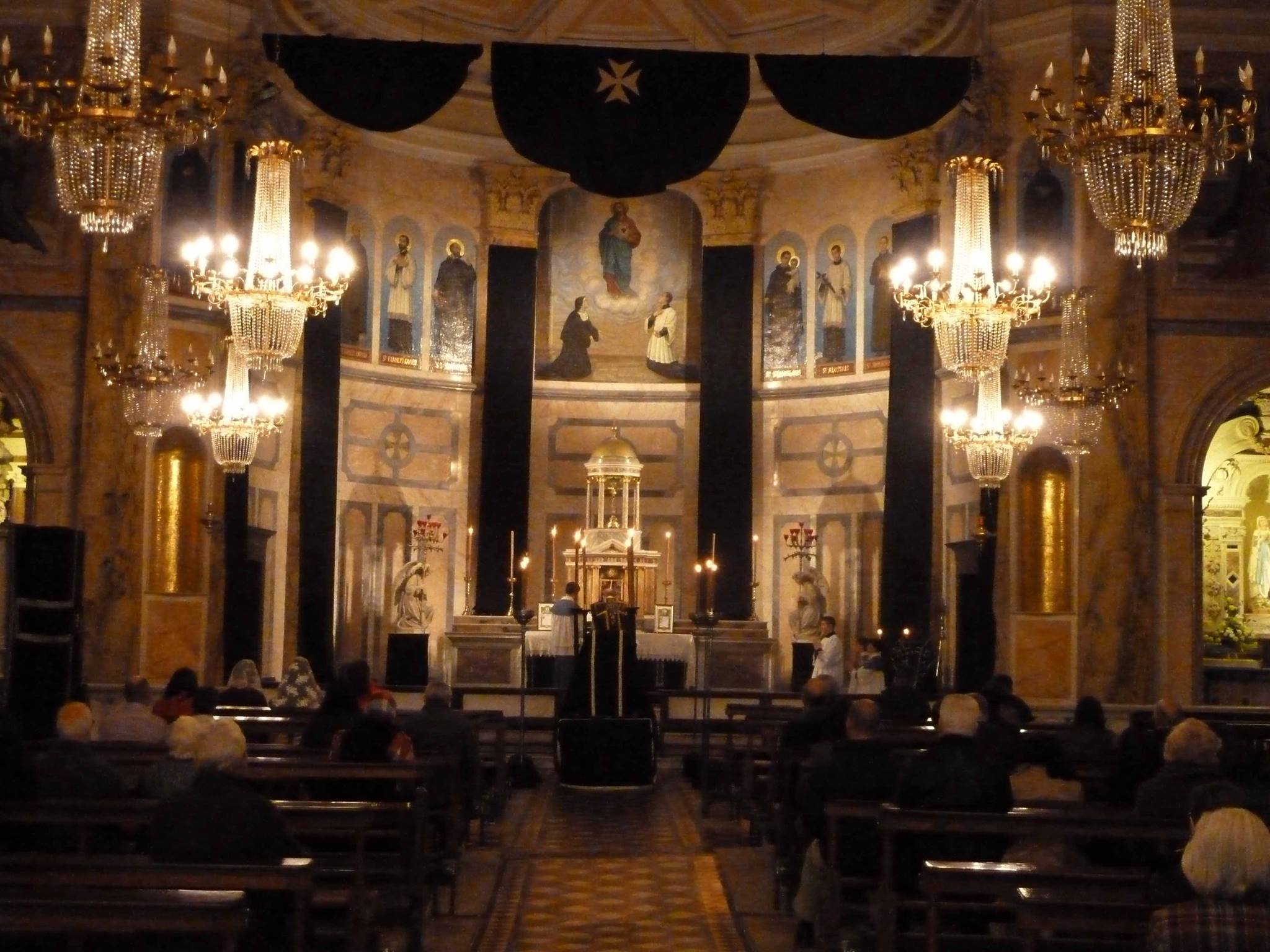




Comments
comments are currently closed
4 responses to “The Loss of Ad Orientam and Other Liturgical Tragedies”
Although we associate the 1969 “Novus Ordo” Mass with “Mass facing the people”
this, in fact, NEVER has been mandated: the Novus Ordo Mass may be celebrated with the priest facing East, using a traditional High Altar. My parish (http://www.stmarynorwalk.net/ ) has both the traditional Latin Mass and the Novus Ordo–and both forms are celebrated at the High Altar.
We do not even HAVE a free-standing “table altar”. (We did for many decades but got rid of it a number of years ago.) In the Novus Ordo Masses the priest stands or sits at the “sedile” [bench] on the right side of the sanctuary for for 1st half of the Mass, but faces towards the high altar for all prayers. From the “preparation of the gifts” until just before the “Prayer after Communion” [post communio] he stands at the altar, just as he does at the traditional Latin Mass.
Christopher,
That is wonderful that your priest has removed the free-standing altar and is celebrating all Masses Ad Orientum.
Reading the writings of Michael Davies, it becomes clear that according to the Vatican II document, the “Constitution on the Sacred Liturgy”, Sacrosanctum Concilium, no changes were made to either the Sanctuary or the liturgy. These changes came afterwards, implemented by certain theologians and priests who appeared to alter the interpretation of this document for their own ends. Some extremely shady business, to Holy Church’s and, of course, our detriment.
We must all pray hard for the spread of the Latin Liturgy and all priests who celebrate it. Your priest must be wonderful.
Yours, in our Blessed Lord,
Kim
Reminds me of c. 1980 in Spain.
Many churches with a new altar have the inscription “esa iglesia fue reformada en 1980” or “en 1982”.
I can obviously only speak for the North, as I was doing Camino Francés (Irún is Camino del Norte, but I didn’t enter a Church there, and from there the hospitalera gave me means to make it by bus to further back ! on Camino Francés, i e starting from Pamplona).
It seems Franco and the bishops while he was alive may have done sth to delay the change.
Hans-Georg,
That is a late change to the sanctuary.
Roger and I found there were very few Latin Masses in Spain, when we lived there. But, we were very touched by the beauty of the churches in general. Even though they all had free-standing altars, for the new liturgy, the rest of the church was usually preserved very well.
We were also moved by the huge community processions for Easter and Corpus Christi and local saints feast days. The Spanish love to parade.
Yours, in our Blessed Lord,
Kim